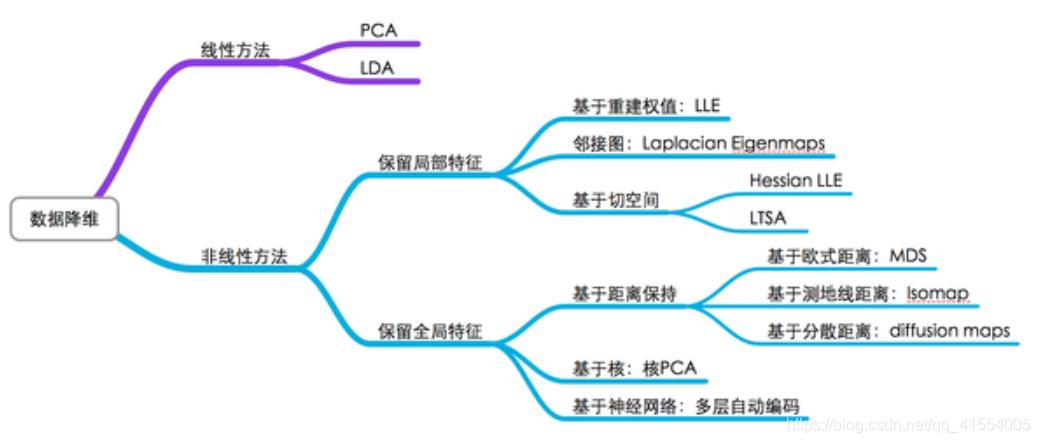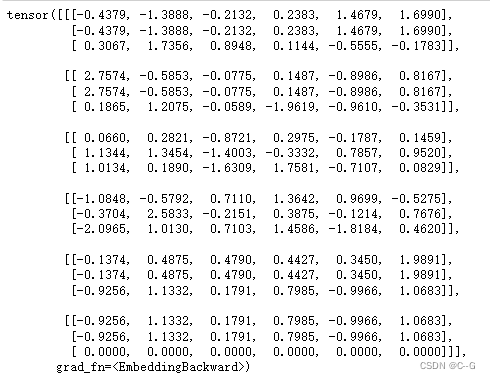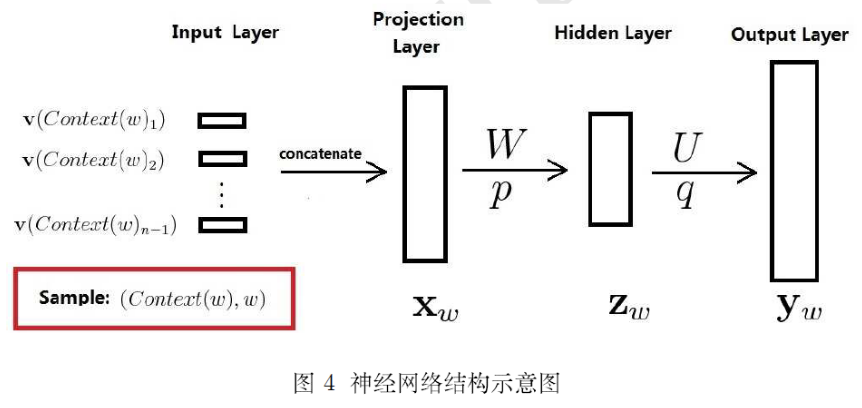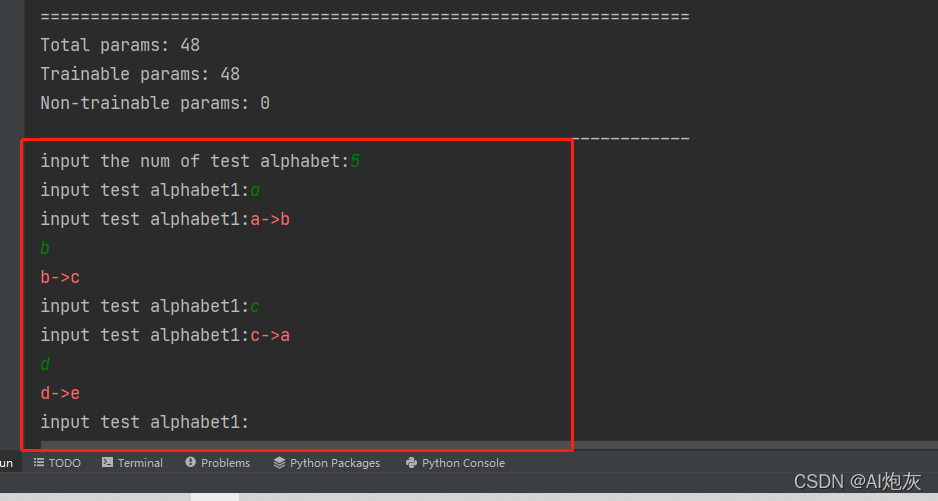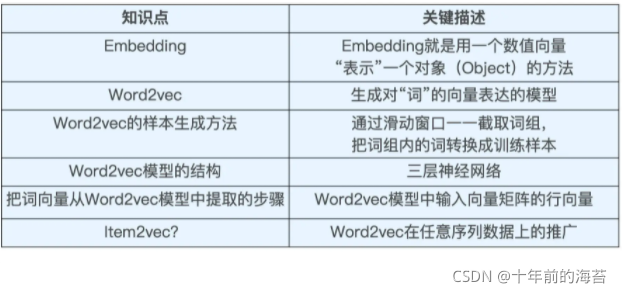目前流行的强化学习算法包括 Q-learning、SARSA、DDPG、A2C、PPO、DQN 和 TRPO。 这些算法已被用于在游戏、机器人和决策制定等各种应用中,并且这些流行的算法还在不断发展和改进,本文我们将对其做一个简单的介绍。
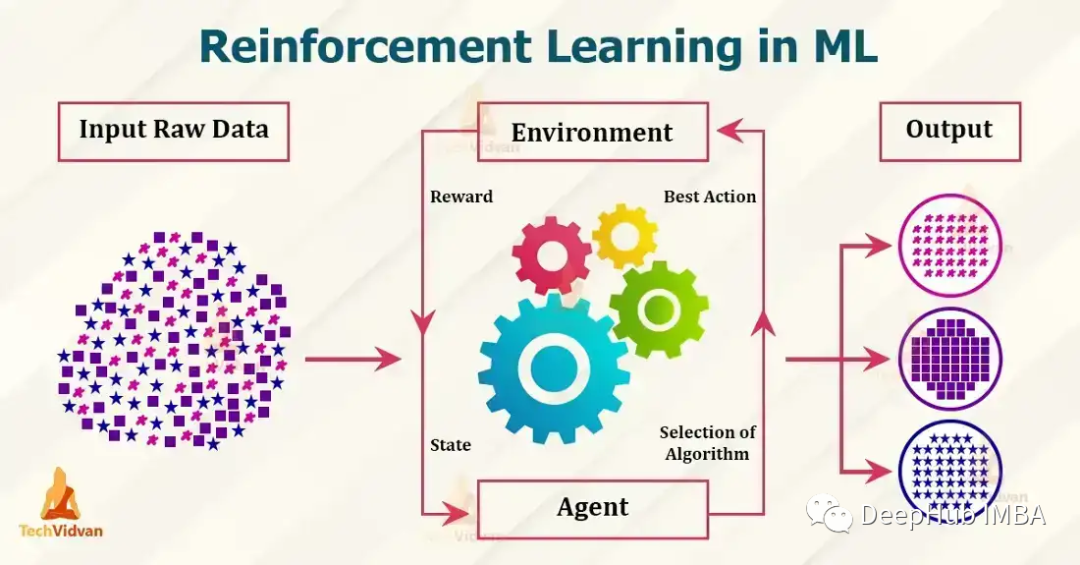
1、Q-learning
Q-learning:Q-learning 是一种无模型、非策略的强化学习算法。 它使用 Bellman 方程估计最佳动作值函数,该方程迭代地更新给定状态动作对的估计值。 Q-learning 以其简单性和处理大型连续状态空间的能力而闻名。
下面是一个使用 Python 实现 Q-learning 的简单示例:
importnumpyasnp# Define the Q-table and the learning rateQ=np.zeros((state_space_size, action_space_size))alpha=0.1# Define the exploration rate and discount factorepsilon=0.1gamma=0.99forepisodeinrange(num_episodes):current_state=initial_statewhilenotdone:# Choose an action using an epsilon-greedy policyifnp.random.uniform(0, 1) <epsilon:action=np.random.randint(0, action_space_size)else:action=np.argmax(Q[current_state])# Take the action and observe the next state and rewardnext_state, reward, done=take_action(current_state, action)# Update the Q-table using the Bellman equationQ[current_state, action] =Q[current_state, action] +alpha* (reward+gamma*np.max(Q[next_state]) -Q[current_state, action])current_state=next_state
上面的示例中,state_space_size 和 action_space_size 分别是环境中的状态数和动作数。 num_episodes 是要为运行算法的轮次数。 initial_state 是环境的起始状态。 take_action(current_state, action) 是一个函数,它将当前状态和一个动作作为输入,并返回下一个状态、奖励和一个指示轮次是否完成的布尔值。
在 while 循环中,使用 epsilon-greedy 策略根据当前状态选择一个动作。 使用概率 epsilon选择一个随机动作,使用概率 1-epsilon选择对当前状态具有最高 Q 值的动作。
采取行动后,观察下一个状态和奖励,使用Bellman方程更新q。 并将当前状态更新为下一个状态。这只是 Q-learning 的一个简单示例,并未考虑 Q-table 的初始化和要解决的问题的具体细节。
2、SARSA
SARSA:SARSA 是一种无模型、基于策略的强化学习算法。 它也使用Bellman方程来估计动作价值函数,但它是基于下一个动作的期望值,而不是像 Q-learning 中的最优动作。 SARSA 以其处理随机动力学问题的能力而闻名。
importnumpyasnp# Define the Q-table and the learning rateQ=np.zeros((state_space_size, action_space_size))alpha=0.1# Define the exploration rate and discount factorepsilon=0.1gamma=0.99forepisodeinrange(num_episodes):current_state=initial_stateaction=epsilon_greedy_policy(epsilon, Q, current_state)whilenotdone:# Take the action and observe the next state and rewardnext_state, reward, done=take_action(current_state, action)# Choose next action using epsilon-greedy policynext_action=epsilon_greedy_policy(epsilon, Q, next_state)# Update the Q-table using the Bellman equationQ[current_state, action] =Q[current_state, action] +alpha* (reward+gamma*Q[next_state, next_action] -Q[current_state, action])current_state=next_stateaction=next_action
state_space_size和action_space_size分别是环境中的状态和操作的数量。num_episodes是您想要运行SARSA算法的轮次数。Initial_state是环境的初始状态。take_action(current_state, action)是一个将当前状态和作为操作输入的函数,并返回下一个状态、奖励和一个指示情节是否完成的布尔值。
在while循环中,使用在单独的函数epsilon_greedy_policy(epsilon, Q, current_state)中定义的epsilon-greedy策略来根据当前状态选择操作。使用概率 epsilon选择一个随机动作,使用概率 1-epsilon对当前状态具有最高 Q 值的动作。
上面与Q-learning相同,但是采取了一个行动后,在观察下一个状态和奖励时它然后使用贪心策略选择下一个行动。并使用Bellman方程更新q表。
3、DDPG
DDPG 是一种用于连续动作空间的无模型、非策略算法。 它是一种actor-critic算法,其中actor网络用于选择动作,而critic网络用于评估动作。 DDPG 对于机器人控制和其他连续控制任务特别有用。
importnumpyasnpfromkeras.modelsimportModel, Sequentialfromkeras.layersimportDense, Inputfromkeras.optimizersimportAdam# Define the actor and critic modelsactor=Sequential()actor.add(Dense(32, input_dim=state_space_size, activation='relu'))actor.add(Dense(32, activation='relu'))actor.add(Dense(action_space_size, activation='tanh'))actor.compile(loss='mse', optimizer=Adam(lr=0.001))critic=Sequential()critic.add(Dense(32, input_dim=state_space_size, activation='relu'))critic.add(Dense(32, activation='relu'))critic.add(Dense(1, activation='linear'))critic.compile(loss='mse', optimizer=Adam(lr=0.001))# Define the replay bufferreplay_buffer= []# Define the exploration noiseexploration_noise=OrnsteinUhlenbeckProcess(size=action_space_size, theta=0.15, mu=0, sigma=0.2)forepisodeinrange(num_episodes):current_state=initial_statewhilenotdone:# Select an action using the actor model and add exploration noiseaction=actor.predict(current_state)[0] +exploration_noise.sample()action=np.clip(action, -1, 1)# Take the action and observe the next state and rewardnext_state, reward, done=take_action(current_state, action)# Add the experience to the replay bufferreplay_buffer.append((current_state, action, reward, next_state, done))# Sample a batch of experiences from the replay bufferbatch=sample(replay_buffer, batch_size)# Update the critic modelstates=np.array([x[0] forxinbatch])actions=np.array([x[1] forxinbatch])rewards=np.array([x[2] forxinbatch])next_states=np.array([x[3] forxinbatch])target_q_values=rewards+gamma*critic.predict(next_states)critic.train_on_batch(states, target_q_values)# Update the actor modelaction_gradients=np.array(critic.get_gradients(states, actions))actor.train_on_batch(states, action_gradients)current_state=next_state
在本例中,state_space_size和action_space_size分别是环境中的状态和操作的数量。num_episodes是轮次数。Initial_state是环境的初始状态。Take_action (current_state, action)是一个函数,它接受当前状态和操作作为输入,并返回下一个操作。
4、A2C
A2C(Advantage Actor-Critic)是一种有策略的actor-critic算法,它使用Advantage函数来更新策略。 该算法实现简单,可以处理离散和连续的动作空间。
importnumpyasnpfromkeras.modelsimportModel, Sequentialfromkeras.layersimportDense, Inputfromkeras.optimizersimportAdamfromkeras.utilsimportto_categorical# Define the actor and critic modelsstate_input=Input(shape=(state_space_size,))actor=Dense(32, activation='relu')(state_input)actor=Dense(32, activation='relu')(actor)actor=Dense(action_space_size, activation='softmax')(actor)actor_model=Model(inputs=state_input, outputs=actor)actor_model.compile(loss='categorical_crossentropy', optimizer=Adam(lr=0.001))state_input=Input(shape=(state_space_size,))critic=Dense(32, activation='relu')(state_input)critic=Dense(32, activation='relu')(critic)critic=Dense(1, activation='linear')(critic)critic_model=Model(inputs=state_input, outputs=critic)critic_model.compile(loss='mse', optimizer=Adam(lr=0.001))forepisodeinrange(num_episodes):current_state=initial_statedone=Falsewhilenotdone:# Select an action using the actor model and add exploration noiseaction_probs=actor_model.predict(np.array([current_state]))[0]action=np.random.choice(range(action_space_size), p=action_probs)# Take the action and observe the next state and rewardnext_state, reward, done=take_action(current_state, action)# Calculate the advantagetarget_value=critic_model.predict(np.array([next_state]))[0][0]advantage=reward+gamma*target_value-critic_model.predict(np.array([current_state]))[0][0]# Update the actor modelaction_one_hot=to_categorical(action, action_space_size)actor_model.train_on_batch(np.array([current_state]), advantage*action_one_hot)# Update the critic modelcritic_model.train_on_batch(np.array([current_state]), reward+gamma*target_value)current_state=next_state
在这个例子中,actor模型是一个神经网络,它有2个隐藏层,每个隐藏层有32个神经元,具有relu激活函数,输出层具有softmax激活函数。critic模型也是一个神经网络,它有2个隐含层,每层32个神经元,具有relu激活函数,输出层具有线性激活函数。
使用分类交叉熵损失函数训练actor模型,使用均方误差损失函数训练critic模型。动作是根据actor模型预测选择的,并添加了用于探索的噪声。
5、PPO
PPO(Proximal Policy Optimization)是一种策略算法,它使用信任域优化的方法来更新策略。 它在具有高维观察和连续动作空间的环境中特别有用。 PPO 以其稳定性和高样品效率而著称。
importnumpyasnpfromkeras.modelsimportModel, Sequentialfromkeras.layersimportDense, Inputfromkeras.optimizersimportAdam# Define the policy modelstate_input=Input(shape=(state_space_size,))policy=Dense(32, activation='relu')(state_input)policy=Dense(32, activation='relu')(policy)policy=Dense(action_space_size, activation='softmax')(policy)policy_model=Model(inputs=state_input, outputs=policy)# Define the value modelvalue_model=Model(inputs=state_input, outputs=Dense(1, activation='linear')(policy))# Define the optimizeroptimizer=Adam(lr=0.001)forepisodeinrange(num_episodes):current_state=initial_statewhilenotdone:# Select an action using the policy modelaction_probs=policy_model.predict(np.array([current_state]))[0]action=np.random.choice(range(action_space_size), p=action_probs)# Take the action and observe the next state and rewardnext_state, reward, done=take_action(current_state, action)# Calculate the advantagetarget_value=value_model.predict(np.array([next_state]))[0][0]advantage=reward+gamma*target_value-value_model.predict(np.array([current_state]))[0][0]# Calculate the old and new policy probabilitiesold_policy_prob=action_probs[action]new_policy_prob=policy_model.predict(np.array([next_state]))[0][action]# Calculate the ratio and the surrogate lossratio=new_policy_prob/old_policy_probsurrogate_loss=np.minimum(ratio*advantage, np.clip(ratio, 1-epsilon, 1+epsilon) *advantage)# Update the policy and value modelspolicy_model.trainable_weights=value_model.trainable_weightspolicy_model.compile(optimizer=optimizer, loss=-surrogate_loss)policy_model.train_on_batch(np.array([current_state]), np.array([action_one_hot]))value_model.train_on_batch(np.array([current_state]), reward+gamma*target_value)current_state=next_state
6、DQN
DQN(深度 Q 网络)是一种无模型、非策略算法,它使用神经网络来逼近 Q 函数。 DQN 特别适用于 Atari 游戏和其他类似问题,其中状态空间是高维的,并使用神经网络近似 Q 函数。
importnumpyasnpfromkeras.modelsimportSequentialfromkeras.layersimportDense, Inputfromkeras.optimizersimportAdamfromcollectionsimportdeque# Define the Q-network modelmodel=Sequential()model.add(Dense(32, input_dim=state_space_size, activation='relu'))model.add(Dense(32, activation='relu'))model.add(Dense(action_space_size, activation='linear'))model.compile(loss='mse', optimizer=Adam(lr=0.001))# Define the replay bufferreplay_buffer=deque(maxlen=replay_buffer_size)forepisodeinrange(num_episodes):current_state=initial_statewhilenotdone:# Select an action using an epsilon-greedy policyifnp.random.rand() <epsilon:action=np.random.randint(0, action_space_size)else:action=np.argmax(model.predict(np.array([current_state]))[0])# Take the action and observe the next state and rewardnext_state, reward, done=take_action(current_state, action)# Add the experience to the replay bufferreplay_buffer.append((current_state, action, reward, next_state, done))# Sample a batch of experiences from the replay bufferbatch=random.sample(replay_buffer, batch_size)# Prepare the inputs and targets for the Q-networkinputs=np.array([x[0] forxinbatch])targets=model.predict(inputs)fori, (state, action, reward, next_state, done) inenumerate(batch):ifdone:targets[i, action] =rewardelse:targets[i, action] =reward+gamma*np.max(model.predict(np.array([next_state]))[0])# Update the Q-networkmodel.train_on_batch(inputs, targets)current_state=next_state
上面的代码,Q-network有2个隐藏层,每个隐藏层有32个神经元,使用relu激活函数。该网络使用均方误差损失函数和Adam优化器进行训练。
7、TRPO
TRPO (Trust Region Policy Optimization)是一种无模型的策略算法,它使用信任域优化方法来更新策略。 它在具有高维观察和连续动作空间的环境中特别有用。
TRPO 是一个复杂的算法,需要多个步骤和组件来实现。TRPO不是用几行代码就能实现的简单算法。
所以我们这里使用实现了TRPO的现有库,例如OpenAI Baselines,它提供了包括TRPO在内的各种预先实现的强化学习算法,。
要在OpenAI Baselines中使用TRPO,我们需要安装:
pip install baselines
然后可以使用baselines库中的trpo_mpi模块在你的环境中训练TRPO代理,这里有一个简单的例子:
importgymfrombaselines.common.vec_env.dummy_vec_envimportDummyVecEnvfrombaselines.trpo_mpiimporttrpo_mpi#Initialize the environmentenv=gym.make("CartPole-v1")env=DummyVecEnv([lambda: env])# Define the policy networkpolicy_fn=mlp_policy#Train the TRPO modelmodel=trpo_mpi.learn(env, policy_fn, max_iters=1000)
我们使用Gym库初始化环境。然后定义策略网络,并调用TRPO模块中的learn()函数来训练模型。
还有许多其他库也提供了TRPO的实现,例如TensorFlow、PyTorch和RLLib。下面时一个使用TF 2.0实现的样例
importtensorflowastfimportgym# Define the policy networkclassPolicyNetwork(tf.keras.Model):def__init__(self):super(PolicyNetwork, self).__init__()self.dense1=tf.keras.layers.Dense(16, activation='relu')self.dense2=tf.keras.layers.Dense(16, activation='relu')self.dense3=tf.keras.layers.Dense(1, activation='sigmoid')defcall(self, inputs):x=self.dense1(inputs)x=self.dense2(x)x=self.dense3(x)returnx# Initialize the environmentenv=gym.make("CartPole-v1")# Initialize the policy networkpolicy_network=PolicyNetwork()# Define the optimizeroptimizer=tf.optimizers.Adam()# Define the loss functionloss_fn=tf.losses.BinaryCrossentropy()# Set the maximum number of iterationsmax_iters=1000# Start the training loopforiinrange(max_iters):# Sample an action from the policy networkaction=tf.squeeze(tf.random.categorical(policy_network(observation), 1))# Take a step in the environmentobservation, reward, done, _=env.step(action)withtf.GradientTape() astape:# Compute the lossloss=loss_fn(reward, policy_network(observation))# Compute the gradientsgrads=tape.gradient(loss, policy_network.trainable_variables)# Perform the update stepoptimizer.apply_gradients(zip(grads, policy_network.trainable_variables))ifdone:# Reset the environmentobservation=env.reset()
在这个例子中,我们首先使用TensorFlow的Keras API定义一个策略网络。然后使用Gym库和策略网络初始化环境。然后定义用于训练策略网络的优化器和损失函数。
在训练循环中,从策略网络中采样一个动作,在环境中前进一步,然后使用TensorFlow的GradientTape计算损失和梯度。然后我们使用优化器执行更新步骤。
这是一个简单的例子,只展示了如何在TensorFlow 2.0中实现TRPO。TRPO是一个非常复杂的算法,这个例子没有涵盖所有的细节,但它是试验TRPO的一个很好的起点。
总结
以上就是我们总结的7个常用的强化学习算法,这些算法并不相互排斥,通常与其他技术(如值函数逼近、基于模型的方法和集成方法)结合使用,可以获得更好的结果。
https://avoid.overfit.cn/post/82000e3c65a14403b5e4defae28b703b
作者:Siddhartha Pramanik





